What? A “personal luxury” car? Are we going to glorify “neoclassic” cars next? Have we really reached the bottom of the barrel with Pontiac cars already for Pontiac Pthursday?
Hold on a minute. The 1969 Grand Prix was an early vision of what an American gran touring sport/luxury coupe might look like before the Big Three went overboard with landau roofs and Corinthian leather. Many consider this Grand Prix to be the very first true “personal luxury” car, and initially the concept didn’t involve crap like wire wheel covers or opera windows. In fact, in barely over 100 examples it involved a whopping 390 horsepower V8 hooked up to a four-speed manual transmission. Now are you willing to give this thing a chance?
You’re Not Running Any Grand Prix In That Aircraft Carrier
One of the most impossible tasks in the automotive world is to totally change the image of a car company from something stodgy and workmanlike to sporty and exciting. There’s a long list of “not your father’s Oldsmobile” and “the Caddy that zigs” failures.
We might know John DeLorean for his well-publicized failures and transgressions, but almost certainly one of the greatest image-turnaround successes in automotive history was his total transformation of Pontiac.
Pontiac already had the very beginnings of this change with the introduction of “wide track” in 1959. This all began when then-General Manager Bunkie Knudsen was observing the clay mockups of upcoming models according to a quote Knudsen shared for a 1994 interview in High Performance Pontiac magazine.:
“At that time, although the body styling was very appealing with the normal tread, the new Pontiac looked like a football player in ballet shoes,” Knudsen recalled. “(Chief Engineer) Pete (Estes) and I moved the wheels out as a styling measure and it looked fantastic. We checked it out and found that the cost to make the change was minimal, so we went ahead and it was well worth it.”
Working closely with Knudsen was a new assistant chief engineer who would later become famous (or infamous) for building a stainless steel sports car. Delorean took the ball and ran with it, being instrumental in the creation of arguably the first official muscle car, the Pontiac GTO. However, Delorean also developed a vision for something on a higher level: a luxurious yet somewhat sporting grand touring coupe. This would be a car akin to the European Facel-Vega or the mid-fifties Chrysler 300 “letter series”; a sort of “banker’s hot rod” with high performance hidden beneath a subdued, upscale veneer. Enter the 1962 Pontiac Grand Prix like this one for sale by RM Sotheby’s.

Based on that year’s Catalina, the first Grand Prix featured a different grille and headlights, plus less chrome trim, but the big changes were below the surface.
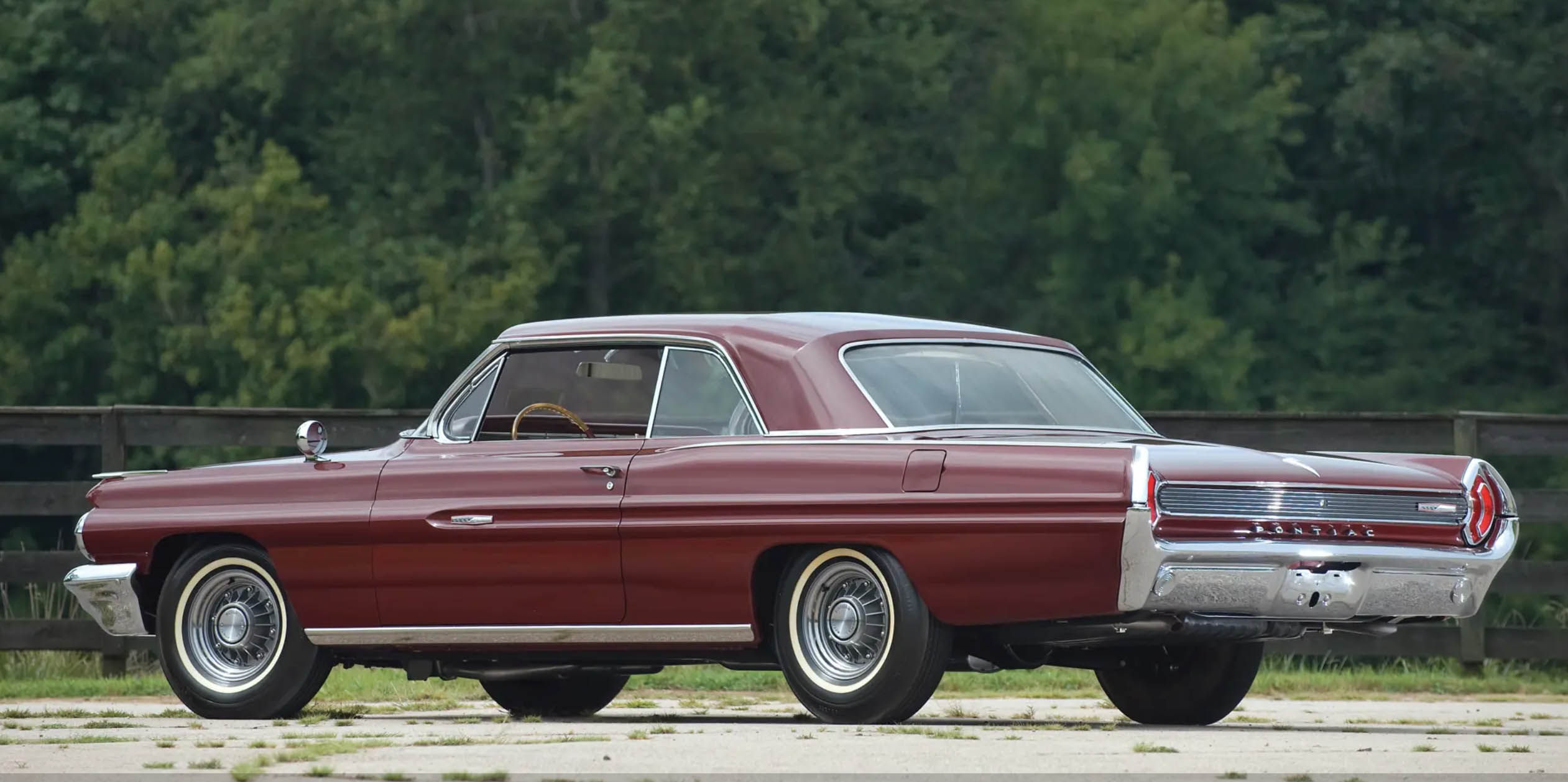
Bucket seats flanked a center console with a floor shifter and tachometer in probably the worst place imaginable for such an instrument. The rear bench was split by a fold-down armrest and speaker grille to give a sort of “bucket seat” look. The whole idea was to create a lower priced alternative to something like a Ford Thunderbird as and early version of what would eventually be called a “personal luxury car”.
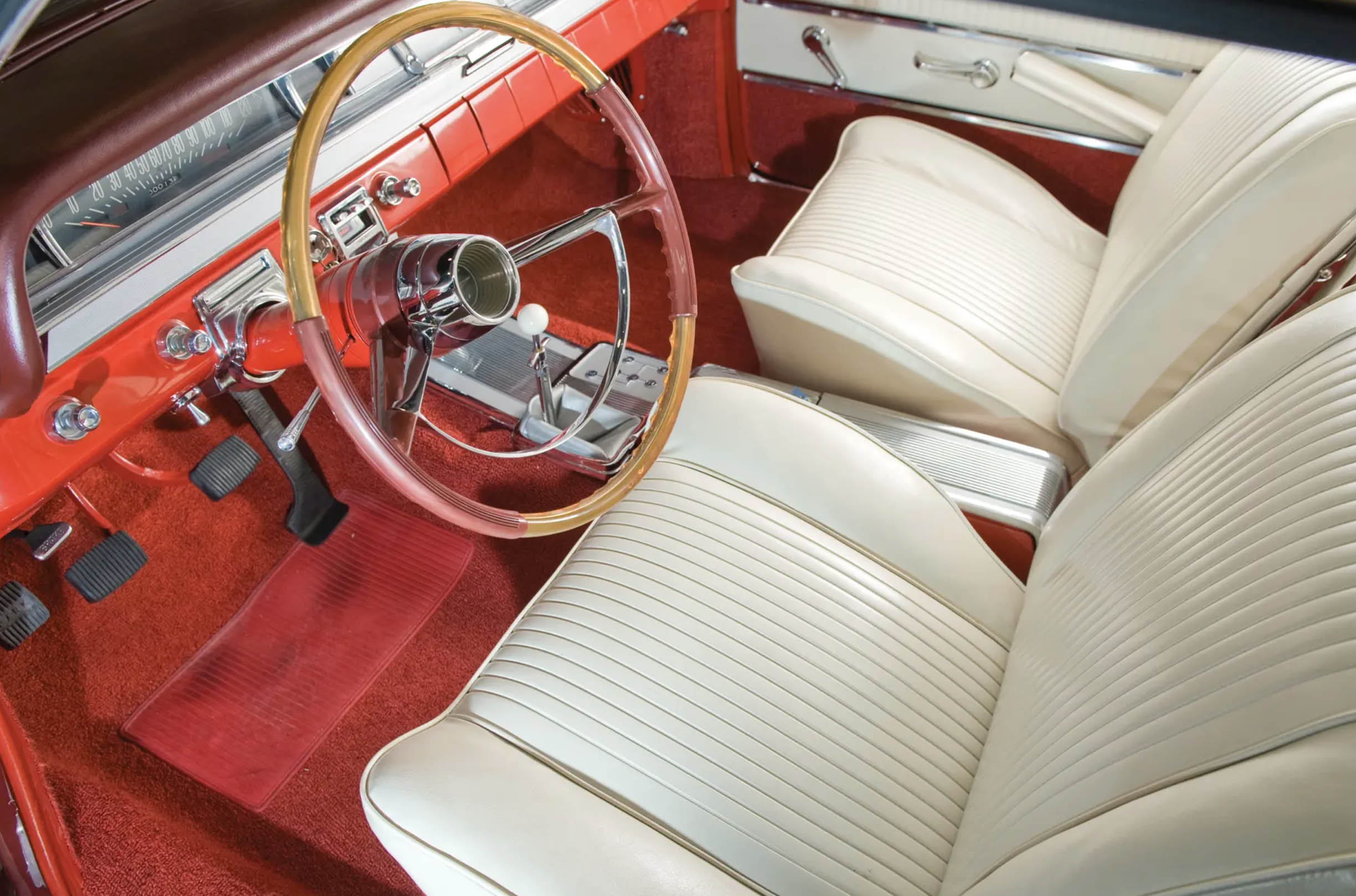
Under the hood, a 303 horsepower “Trophy” version of the 389 V8 sat with a four barrel carburetor and dual exhaust. A standard three-speed manual transmission could be replaced with an optional console-mounted four-speed manual or Hydra-Matic automatic. As in typical sixties fashion that was just the beginning; you could add “tri power” or three two-barrel carburetors for up to 348 hp. The ultimate was the 421 cu in Super Duty with two four-barrel carburetors rated at 405 hp which would truly turn this luxurious and tasteful looking coupe into something fierce.
The Grand Prix could even be specified with Pontiac’s famous “eight lug” wheels that bolted directly to finned brake drums. Ostensibly the fins around the center cap would dissipate heat since they were part of the same casting. Boy, that would be a paint to change a tire by the Cross Bronx Expressway in the rain; I promise at least one of those bolts would be frozen.
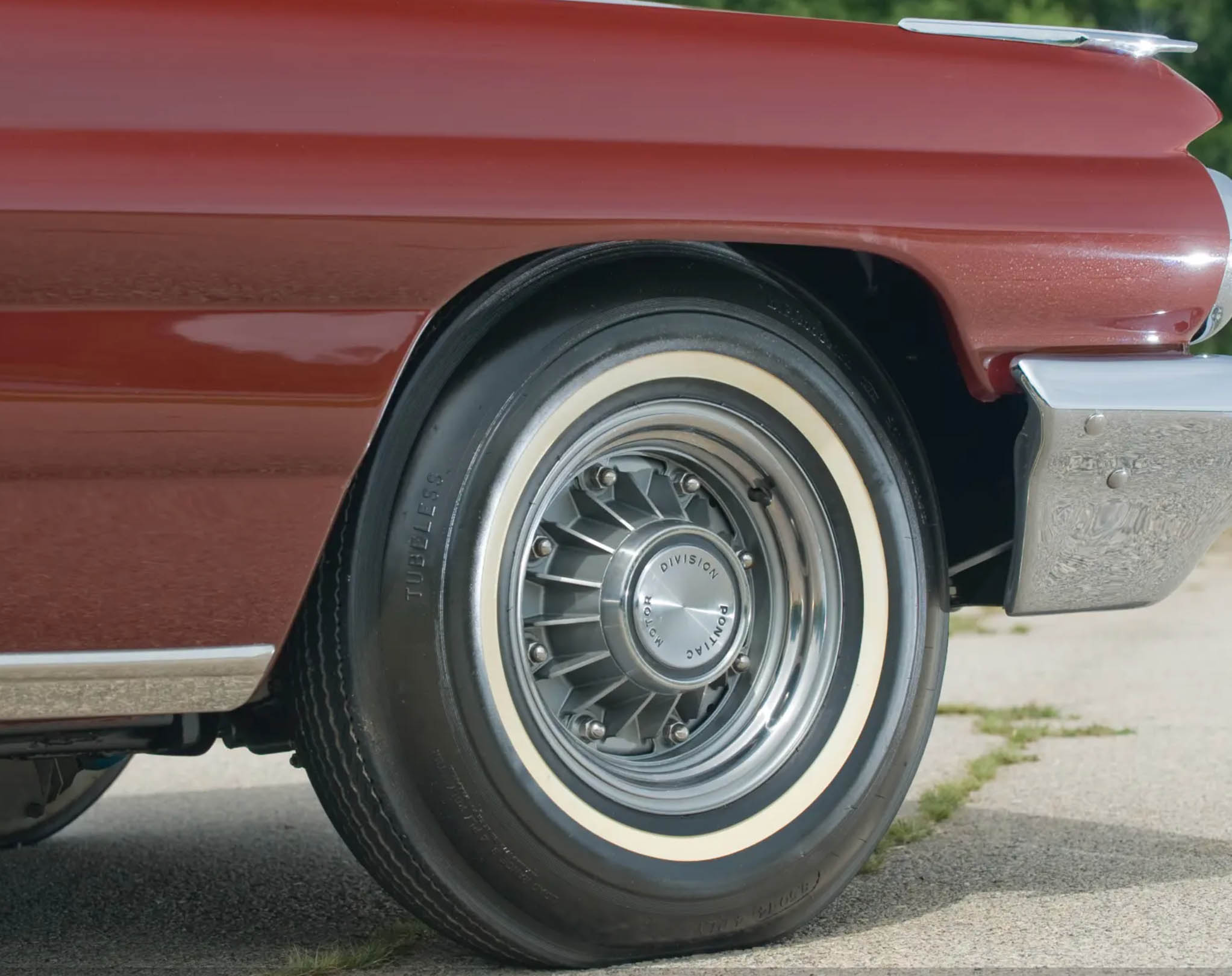
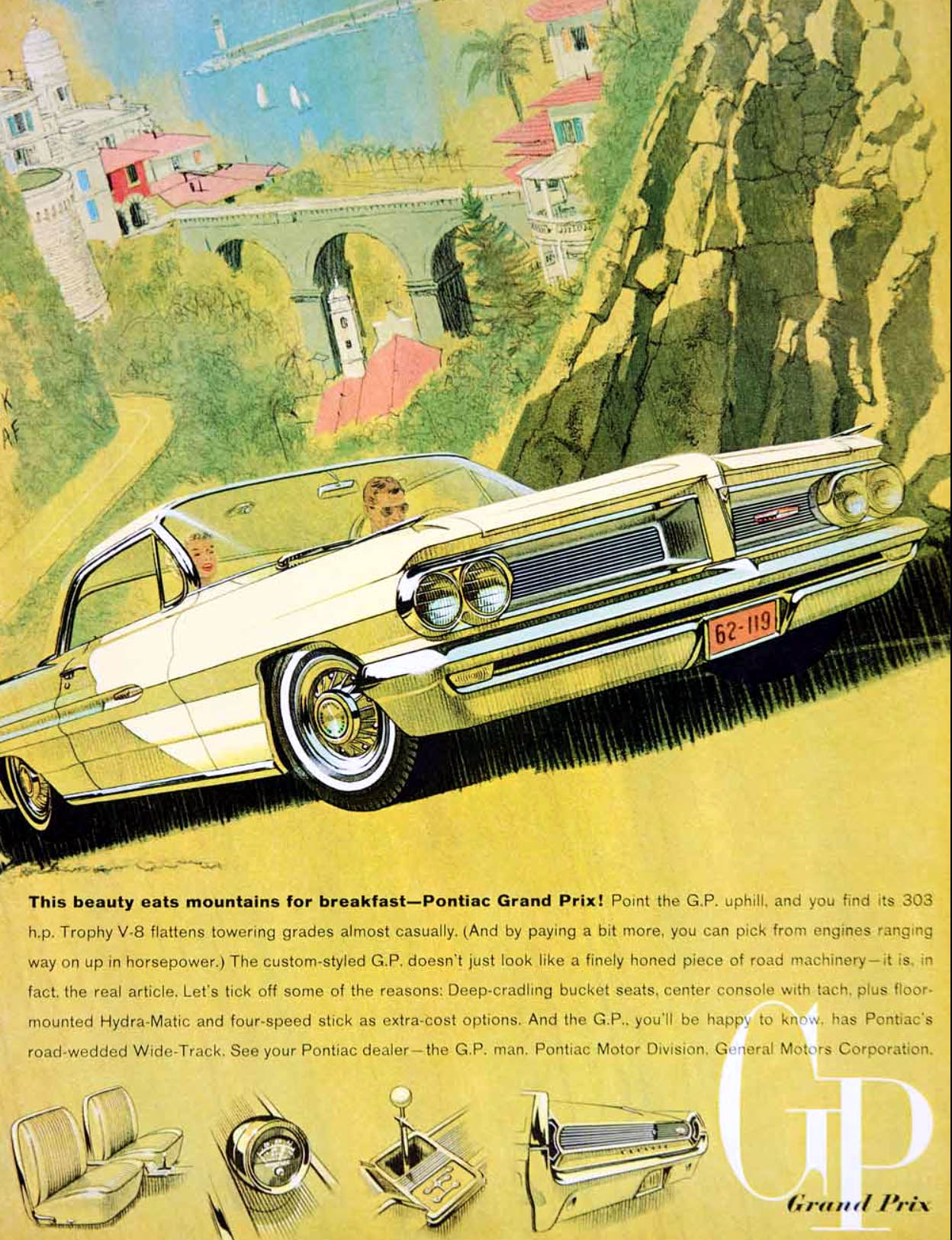
For 1965, the Grand Prix grew slightly and gained a more rounded, heavier look that even included rear fender skirts which gave the car a bit too much of a luxo-barge appearance. Regardless, you could still get an engine that could keep up the “sport” end of the sport/luxury bargain. Top power choice as a 421 cubic inch HO Tri-Power rated 376 hp and still available with a manual transmission.
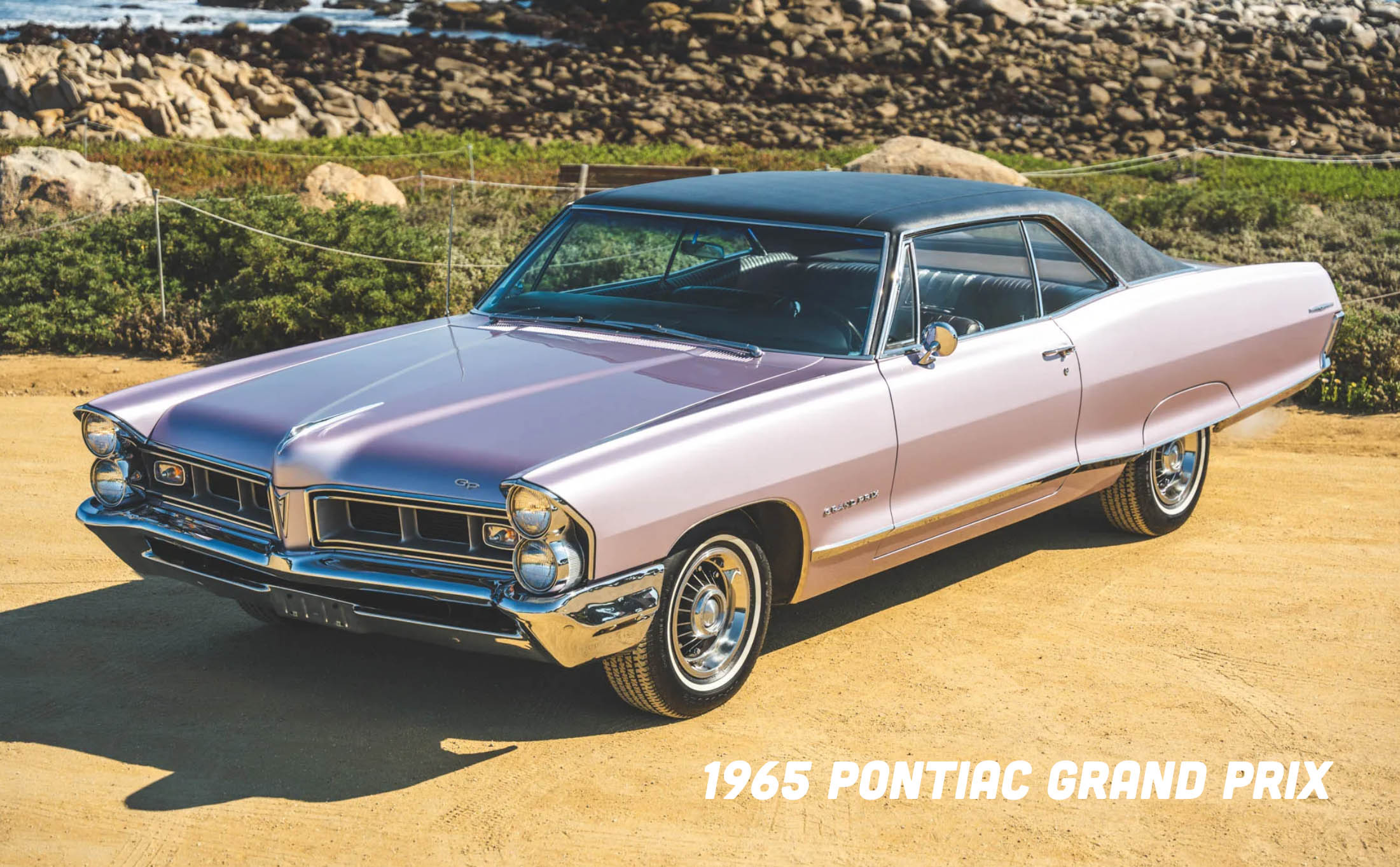
Covered headlights on the later ’67 and ’68 models looked sinister, and power was up to 390 horsepower even with new emissions controls and a change to just one four barrel carburetor. Sales dropped from the 57,881 units sold in 1965 down to a mere 31,178 in 1968.
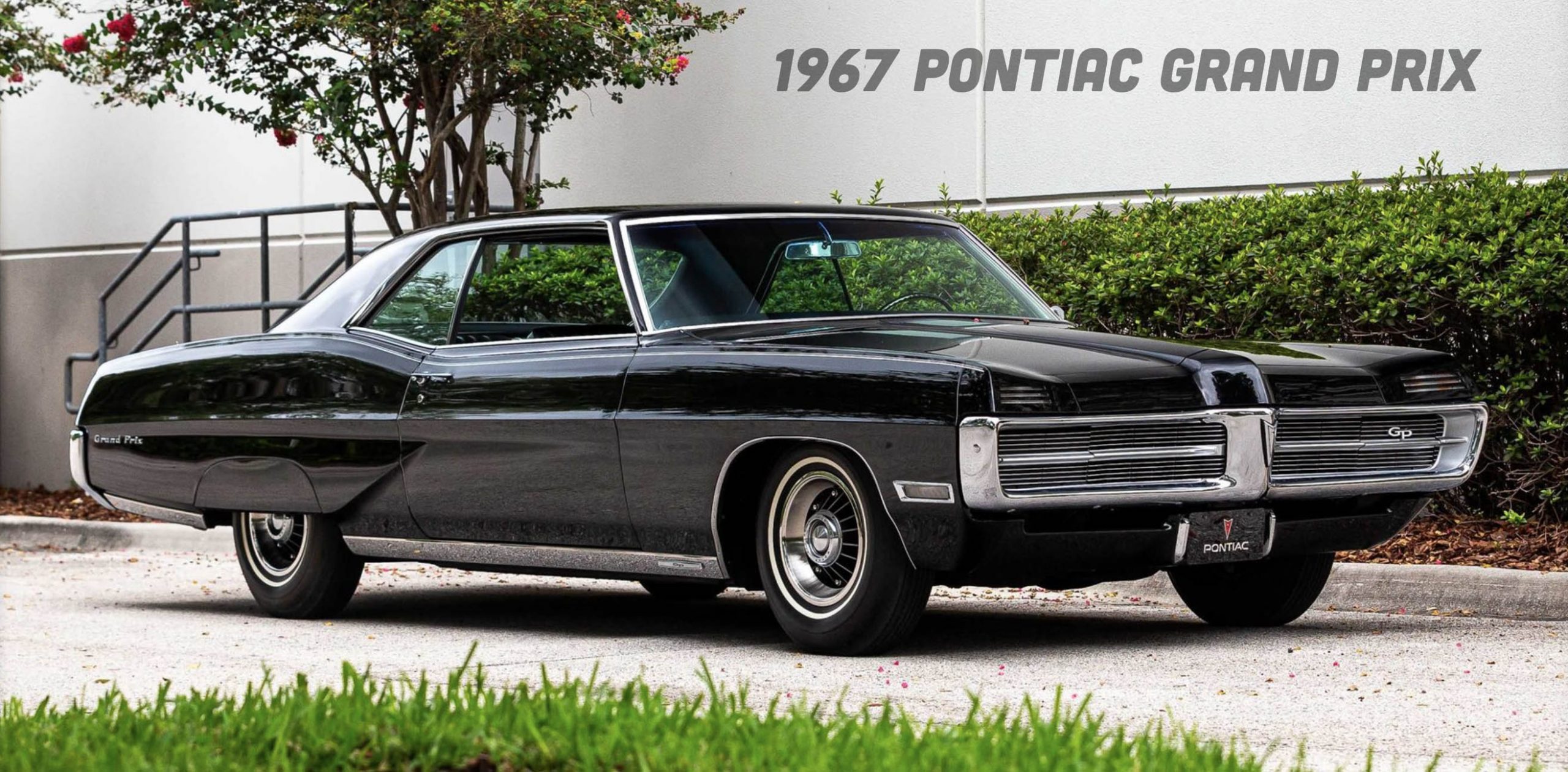
The Grand Prix never strayed too far into overt muscle territory. That was a job given to the ultra-rare Catalina 2+2, a car marketed directly as a big brother to the vaunted GTO (and one I’ll delve into later since I need to save Pontiacs if I ever stand a chance of keeping this every-Thursday thing up).
These massive “sumo class” Grand Prix were indeed cool and offered a fair dose of power, but they didn’t really differ that much from other full-sized Pontiac coupes and truthfully were too big to be convincing as the “personal luxury” grand turismo cars that John Delorean really had in mind. He would change that for the Grand Prix in 1969, and it would change the game entirely for the next few decades.
Like A GTO With An MBA
Now, by moving the Grand Prix down to a platform the same size as the GTO could have caused some issues with people seeing double; an issue that plagued GM in the years to come. Pontiac’s solution was to create a stretched mid-sized A platform to be dubbed the G platform stretched by six inches. Sharing mechanicals with the LeMans, Tempest and GTO allowed for a development time of only 18 months, or half the time typically needed. The question was, with so much sharing would the new Grand Prix be lost among lesser Pontiac brethren?
The answer was no; the look was like no other Pontiac. The new Grand Prix sported the longest hood ever put onto a Pontiac for classical proportions meant to evoke classic American marques like Duesenberg, as shown here in this ad by Orlando Classic Cars:
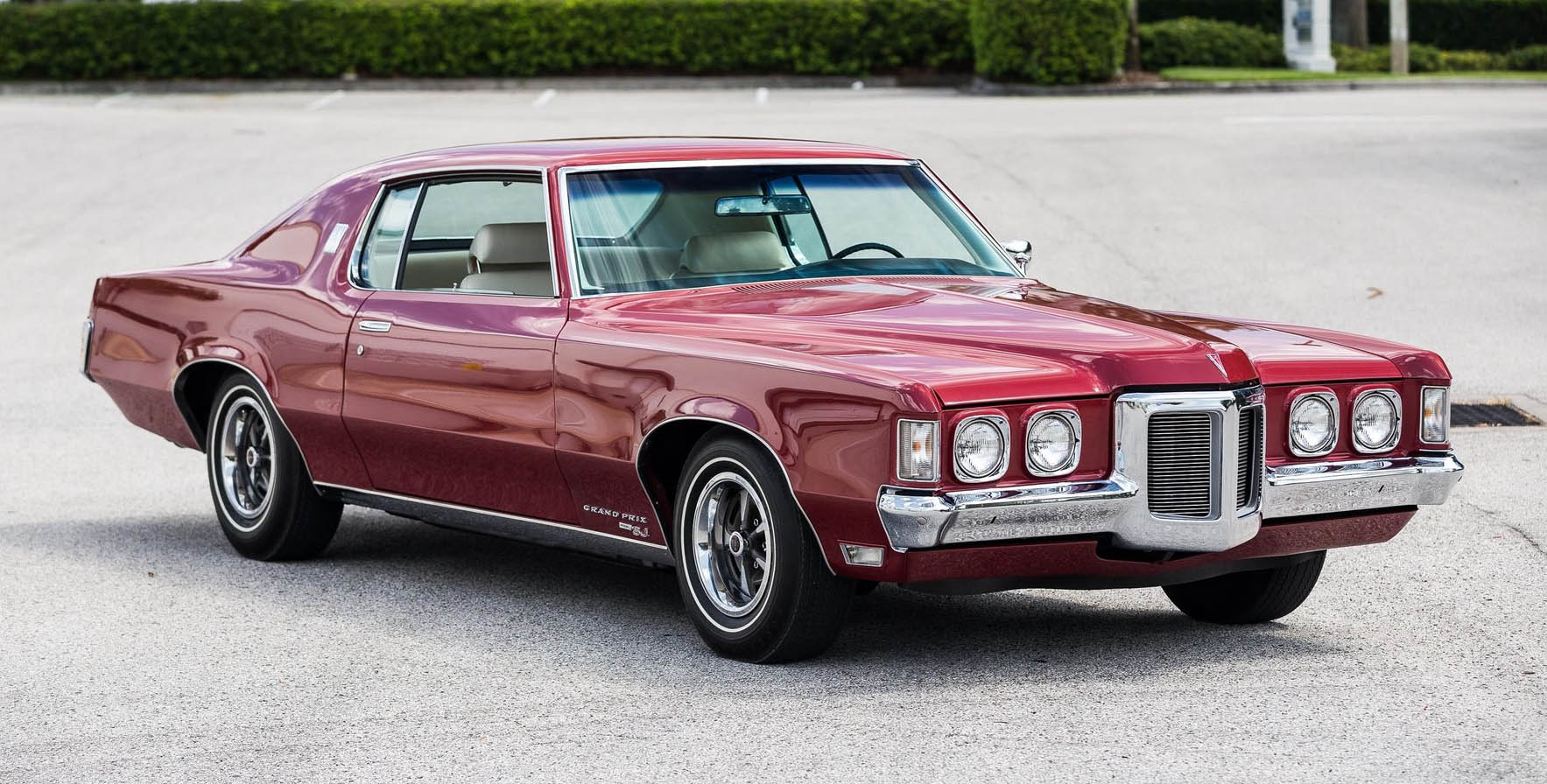
Combined with the large pointed “beak” grille you’d think this thing would appear cartoonish but it didn’t; GM styling in the late sixties really could do no wrong. With subtle semi-fastback design of the rear to counter the aggressive front, you had a remarkably attractive car. Flip-out door handles were a Grand Prix exclusive seemingly copied by Tesla years later, and this Pontiac was the first to feature the windshield-mounted GM antenna (that initially didn’t really work that well). DeLorean even used the Duesenberg designations of “J” and “SJ” to denote the different levels of this new coupe.
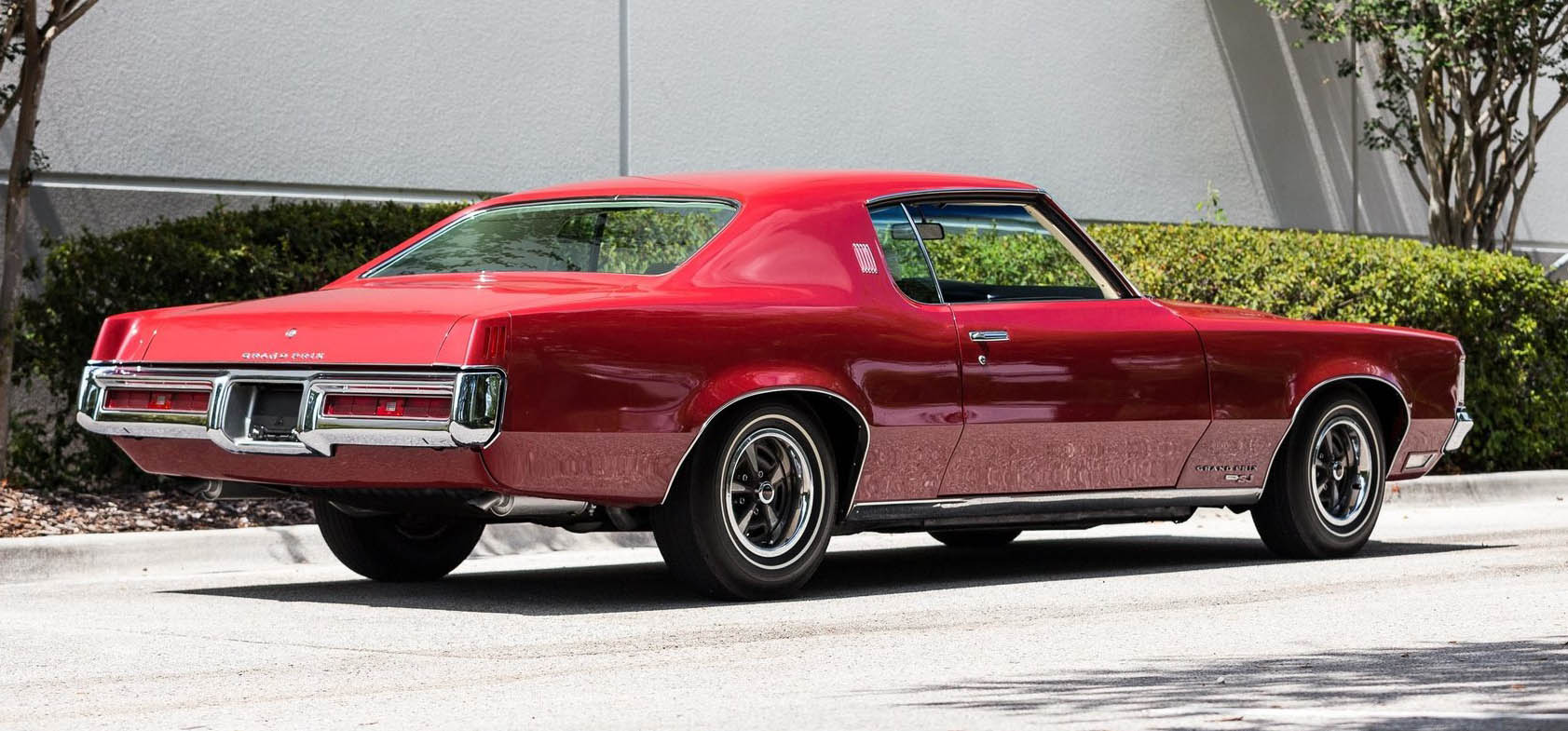
A review in period by Car Life magazine summed it up well:
The crew at Pontiac must have been thinking: “What are we going to sell to the young guy who bought the GTO in ‘64? He’s older now, making more money, a little settled down now that he’s married, and on his way in a good career. Things are good, and he’s ready to be spoiled. But he doesn’t want to sacrifice the thrill of driving. What is being built that combines GTO-style performance with luxury?”
Enter the grandest of the Grands Prix, the luxury enthusiast’s car.
Inside, it was just as good as the exterior. The bucket seats sat behind a driver-focused dashboard with round gauges and secondary controls angled towards the steering wheel. That’s right, front seat passenger: you leave the radio alone! Console and floor shifter were standard; there’s no tach in the main cluster of this example, which has the infamous Pontiac hood mounted rev counter. Here’s one that was offered by Vanguard Motor Sales:
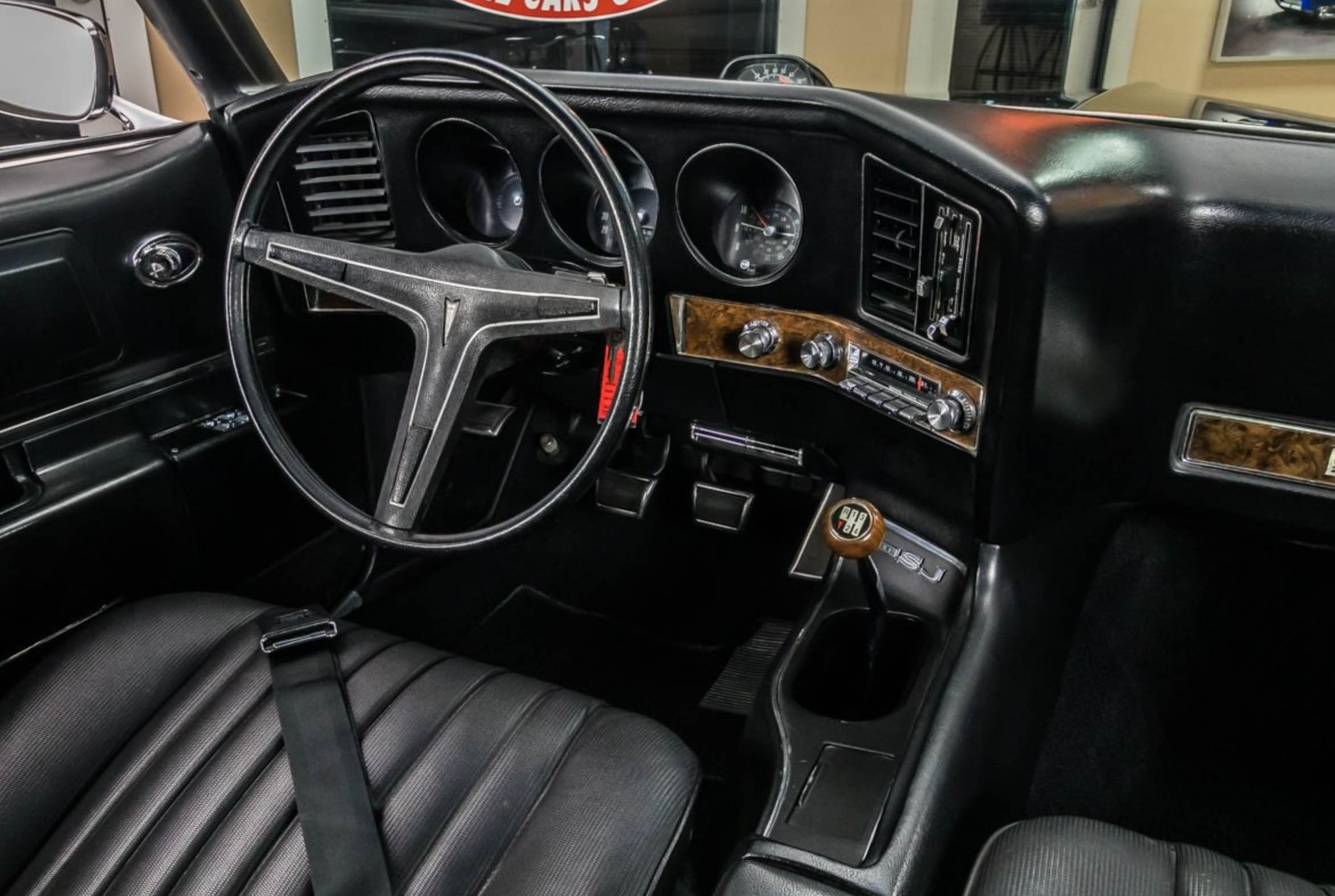
The interior featured enough room for a family as long as they didn’t mind crawling into the back seat through the massive front door openings; as kids we were so small and skinny we could slither back there without folding the front seats forward.
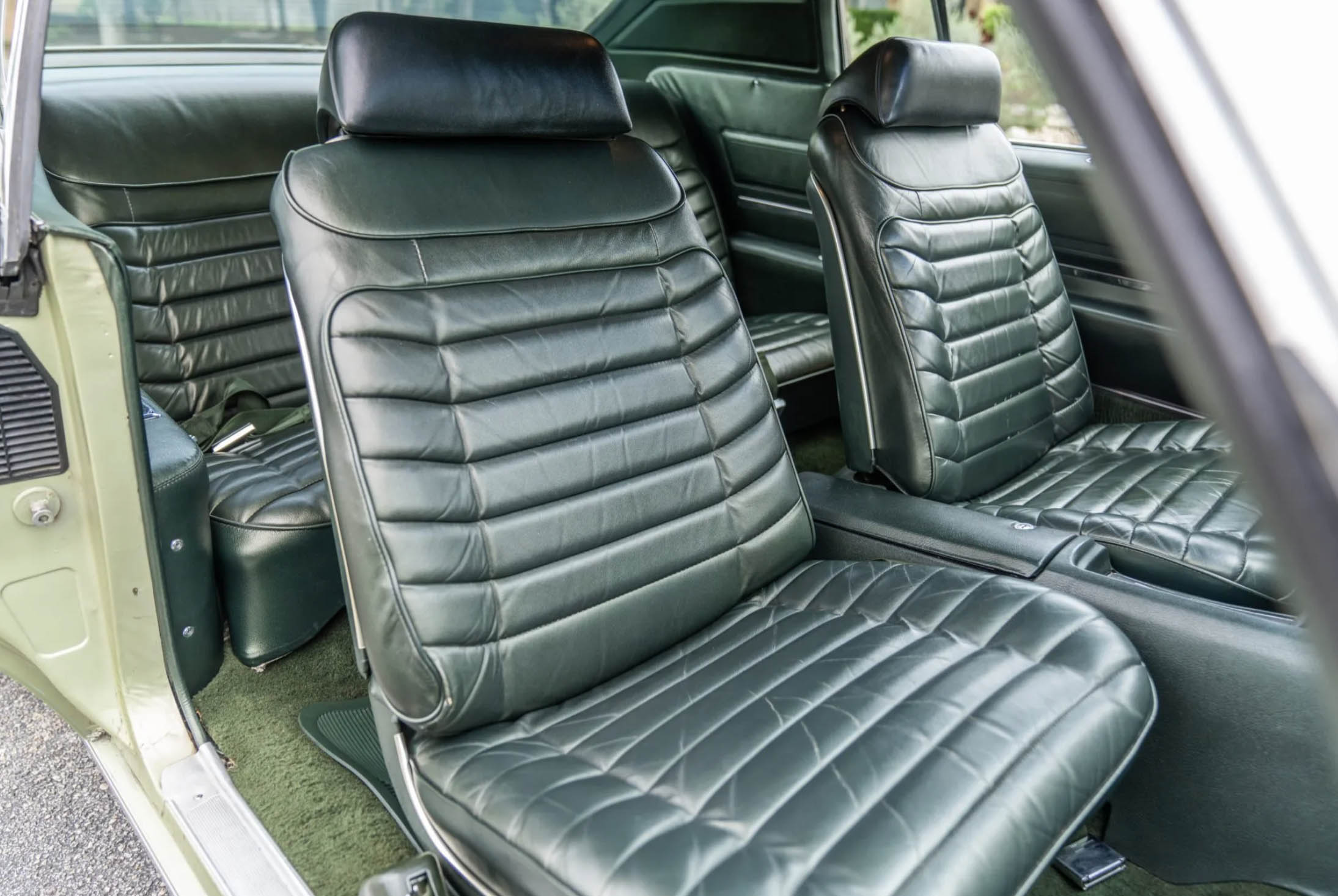

What’s an American car of the late sixties or early seventies without a giant trunk comically filled with spare tire?
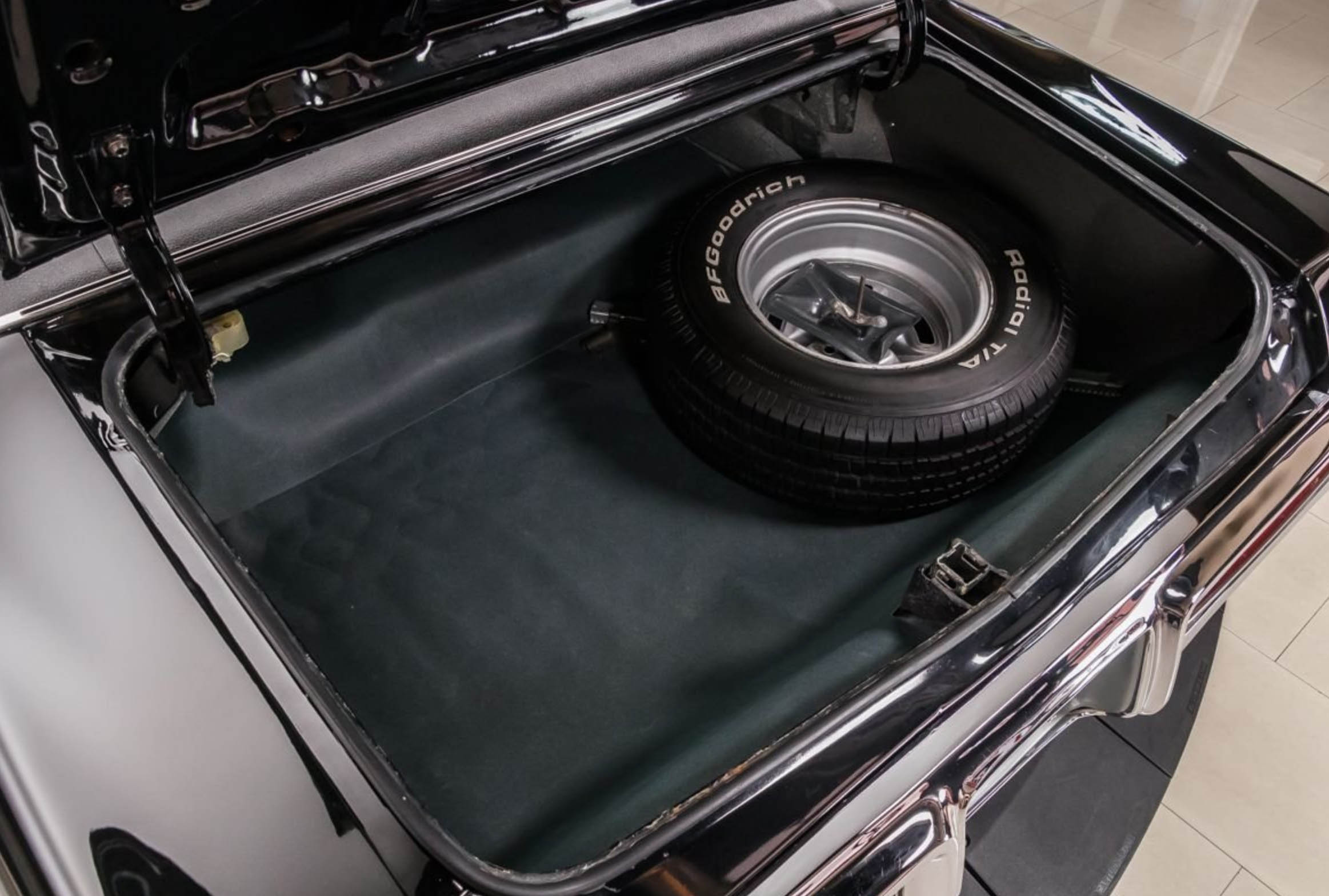
Forget some dull straight six; you only have V8 options with the ’69 GP. The standard 400 cubic inch motor packed either 265 hp or 350 hp, while moving up to the 428 gave you 370 hp.
Ah, but the upgraded SJ package gave you more than just a few extra trim pieces. With that bigger V8 standard plus power front disc brakes and automatic leveling rear airbag/ shocks it gave a more roadable Grand Prix. However, the ultimate SJ packed the optional handling package and the 390-bhp H.O. engine with a 3.55:1 axle ratio.
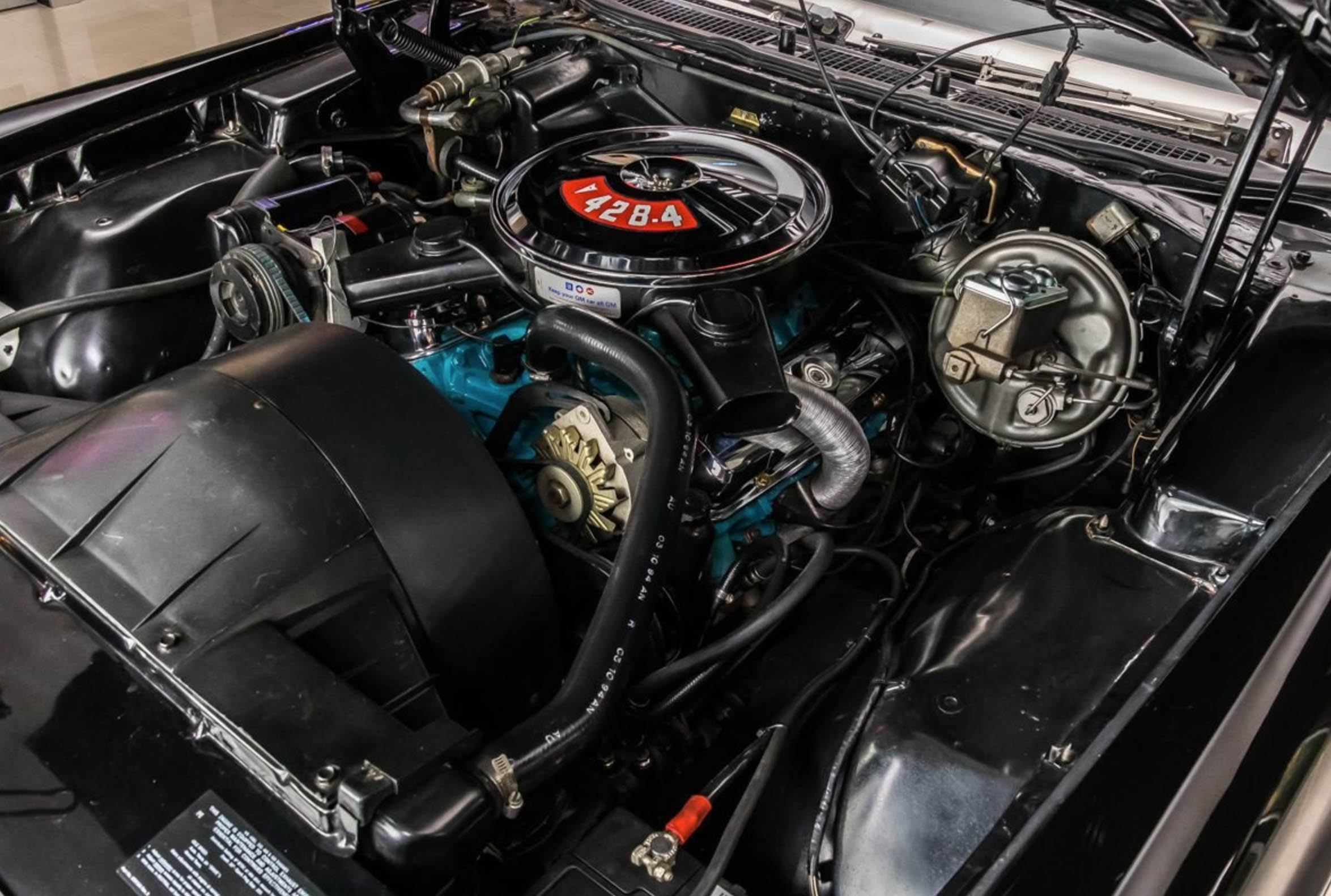
The SJ version was the one that Pontiac truly marketed as the grown-up Goat. You can see below that even in appearance the cars have vastly different personalities despite sharing mechanicals.
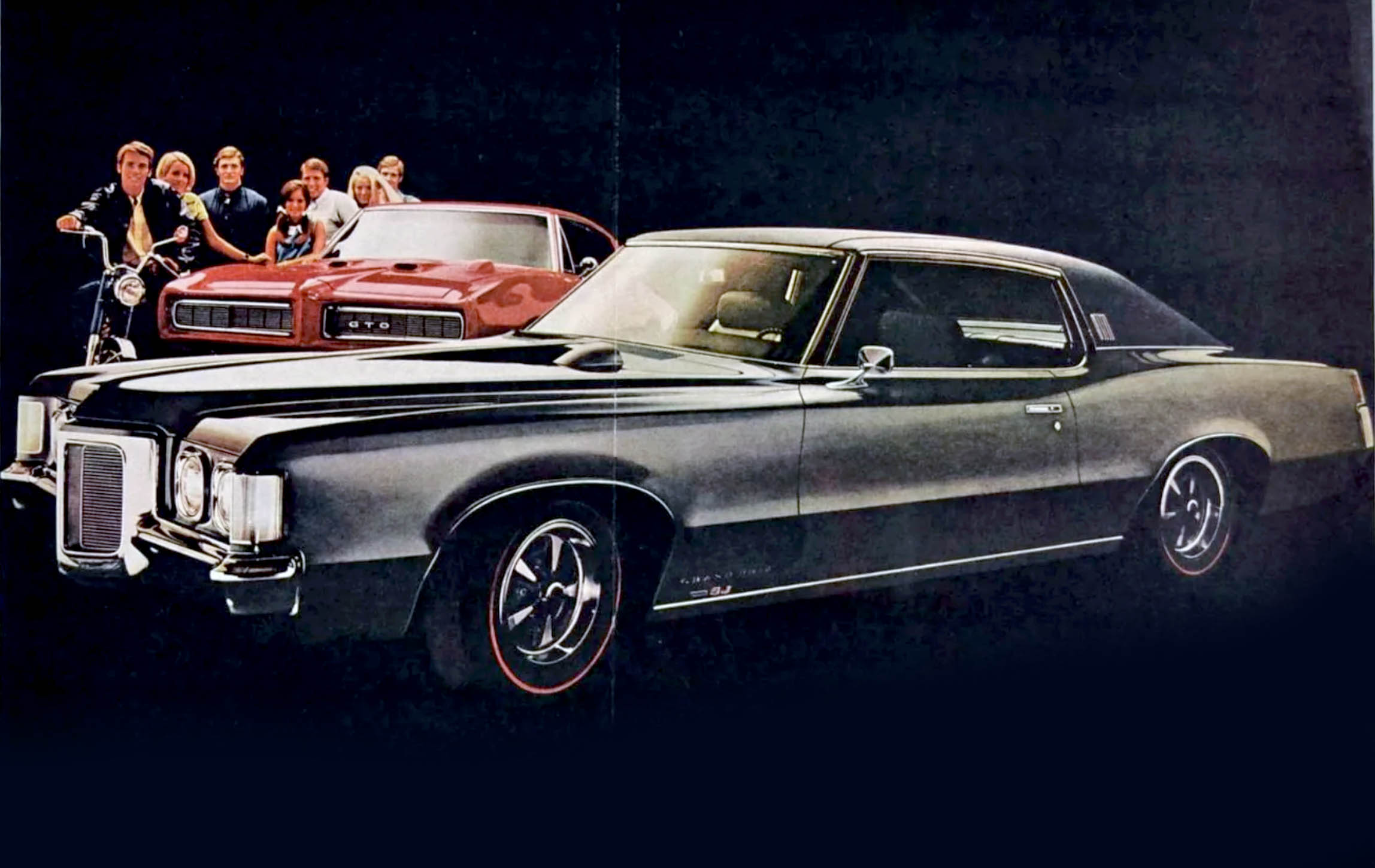
Still don’t believe in John Delorean’s commitment to the cause of keeping it sporty? How about a manual transmission-equipped personal luxury car? That’s right; a three-speed manual was standard for the cheapskates that wouldn’t pop for an automatic, but a four speed was available as an option in either a close- or wide-ratio gears. Yes, even with the HO V8. Word of note: Pontiac at the time claimed that engines in automatic and manual transmission cars produced the same horsepower. However, a post in Curbside Classic claims that the camshaft in automatic cars had less duration, less overlap, and slightly less lift than the one in stick cars; if true, those four-speed HOs had more power. They were also rare as hen’s teeth. Reportedly only 713 Grand Prix buyers selected one with a four on the floor (or 676, depending on your source), and a mere 116 chose that gearbox with the 390 horsepower HO motor.
A 1969 Pontiac Grand Prix HO with the 4-speed manual transmission was tested by Motor Trend and achieved a quarter-mile time of 14.5 seconds at 94.9 mph and 0 to 60 time of 6.8 seconds. Not mind-bending numbers, but enough to blow away more expensive coupes of the day while still coddling occupants in luxury. Vinyl and fake wood luxury, to be sure, but luxury.

Jay Leno typically saves his breath for cars worth talking about, and there’s a lot to say and love about this original example of SJ 4-speed that he sampled some time ago. Look at that glorious brown paint!
It would be an understatement to say that this smaller Grand Prix connected with buyers; the 112,486 units sold for 1969 was four times the numbers of the previous year. However, only 1,105 cars had the 428 H.O. engine, a scant 11,083 had the SJ package at all. It might have been marketed as a GT, but four out of five buyers were fine with something that merely looked like a sporting car, paving the way for the downward spiral of the personal luxury car image.
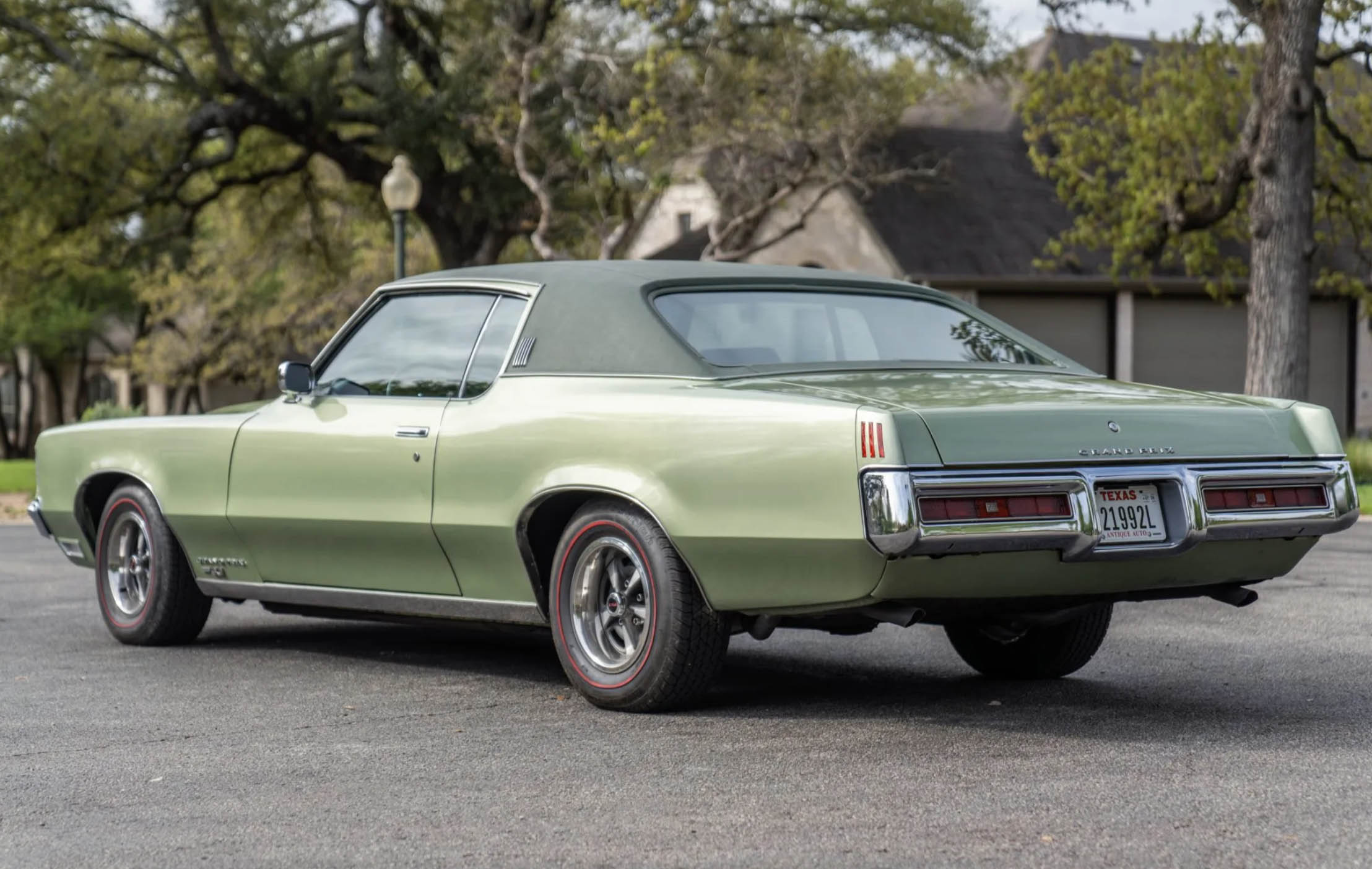
Today, that unjustified “fat coupe” image of later cars in general seems to taint the values of these overlooked Pontiacs. You don’t see a lot out there, but Bring A Trailer recently sold the great condition green automatic HO ’69 Grand Prix you see in the picture above for $34,100, a seemingly stonking deal on what has to be one of the better all-around Pontiacs ever. Those low values mean that you might as well get some use out of an example that you’d buy; certainly, it’s one of the most pleasant muscle cars to operate and ride in. As Jay Leno tells the owner of that brown one in the video above that claims to put only about 50 miles a year on his: “You really ought to drive this more.”
Maybe He Wanted A Pontiac With Gullwing Doors
Twelve months after the 1969 Grand Prix’s introduction, Chevrolet launched their version called the Monte Carlo that totally kicked off the personal luxury car boom. Sadly, other than the ultra-cool SS 454 model sold for the first two years in very limited numbers, the Monte Carlo featured more pasted-on luxury excess, totally forsaking the original “American gentlemen’s express” concept. Even worse, the cheaper 1970 Monte Carlo sold better, sapping nearly forty percent from the Grand Prix’s first year sales numbers. The writing was on the wall for the “banker’s hot rod” turning into “Aunt Sadie’s car to impress the girls at bingo”.
On February 15th, 1969, John DeLorean was promoted to lead the top-selling Chevrolet division; a move that would typically be the steppingstone to the King of General Motors throne. We know now that John had other ideas.
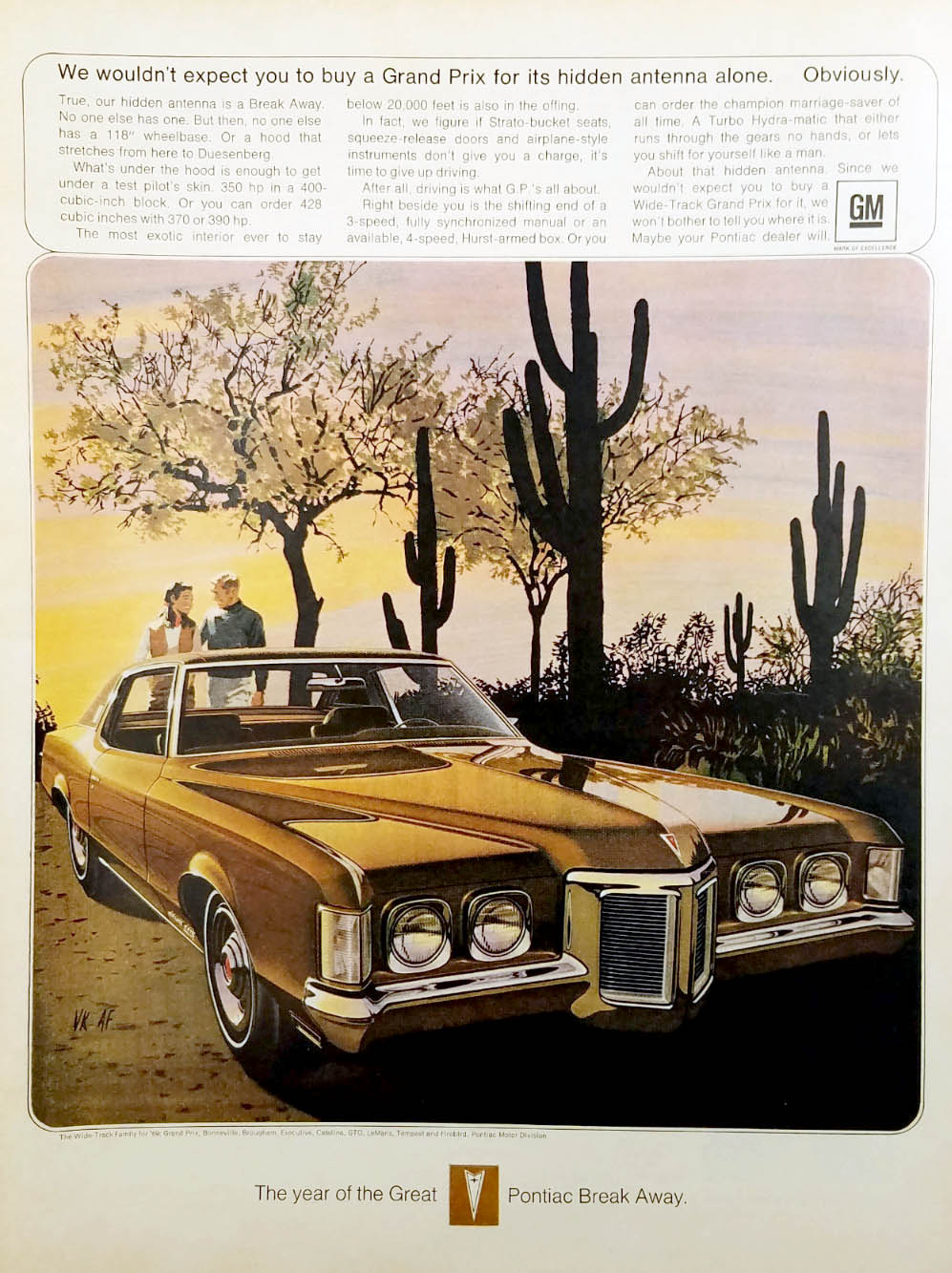
With DeLorean gone from Pontiac, his vision for a performance division waned quickly, and the trajectory to a button-tufted velour upholstered marshmallow of a car quickly distanced the Grand Prix from any hope of being the American BMW 3.0CS coupe that John might have had initially had in mind.
That shouldn’t affect your opinions on the first iterations of the first true personal luxury car; arguably the greatest Grand Prix of all time. It wasn’t perfect, but it did give us a glimpse of an appealing what-if personal luxury coupe genre that wouldn’t have been a malaise-era punchline.
Pontiac Points: 88/ 100
Verdict: If ever an American car perfectly balanced the muscle car experience with manageable size and tasteful luxury, this was it.
Top Image: Orlando Classic Cars









“This beauty eats mountains for breakfast” (from the photo)
I figure it was a raging alcoholic that drank fuel like a fish for breakfast, brunch, lunch, linner, supper, chicken dinner, snacktime, late night snack, & all night rager! Ha ha
Especially w/ 2 4-barrel carbs…
Hell yeah, I’ll take 405 (gross) horsepower in that awesome V8 and roast some tires!
“I need to save Pontiacs if I ever stand a chance of keeping this every-Thursday thing up”
I figure ya still got a while considering Pontiac made about 50 different models (rough estimate from wiki) Only certain ones are kinda similar. I would actually love to see one about the Sunbird. Yeah, not the best cars/reputation but I used to have an 86 that was pretty cool since it was a black liftback w/ blue interior, moonroof, and even had the fog lights in the front. To me it was a poor man’s Trans Am (ha ha!)
I even debated on eventually putting a screaming eagle on the hood but didn’t.
“That’s right, front seat passenger: you leave the radio alone!”
Yup! I’ve always loved these driver focused dashes…the passenger gets fuck all and doesn’t need to be messin w/ shit. Now some cars have passenger screens?! Ha ha ha ha ha
Screw the passenger, nobody needs their own damn screen; maybe open the windows and take in the scenery for once. Let’s blast some tunes and enjoy cruising in luxury and style!
Great article, Thank you
Such a cool car.
But I feel like every article on cars from the gross hp era should have a caveat.
That 390 gross hp rating would be equivalent to around maybe 300 SAE net hp.
While the grand prix did suffer after the downsizing in 78 and never got the attention that the g-body stable mate grand national, the eventual rise of the supercharged 3800 w-body produced some great cars. By today’s standards they are barbaric and slow, but for the day the supercharged version was quite a hoot to drive. Even the non-supercharged 3800 could roast the front tires and fill the cabin with tire smoke.